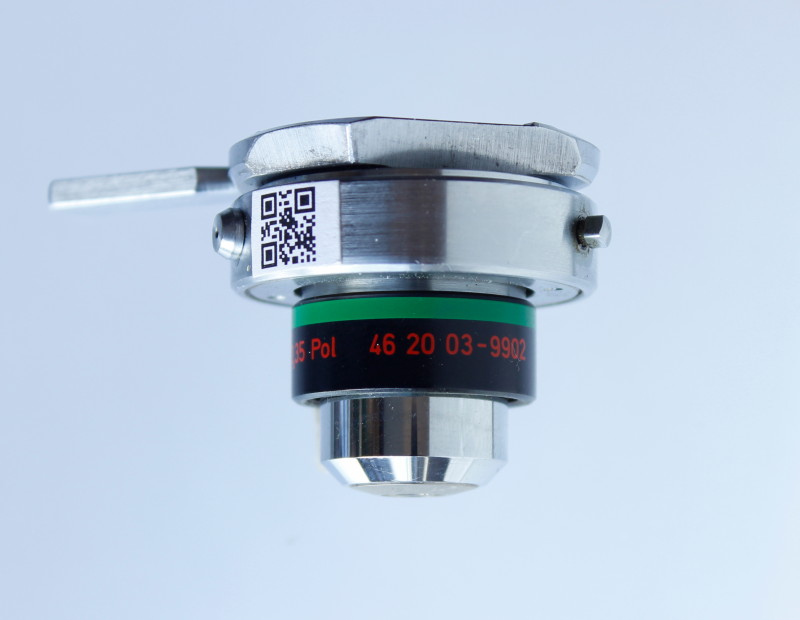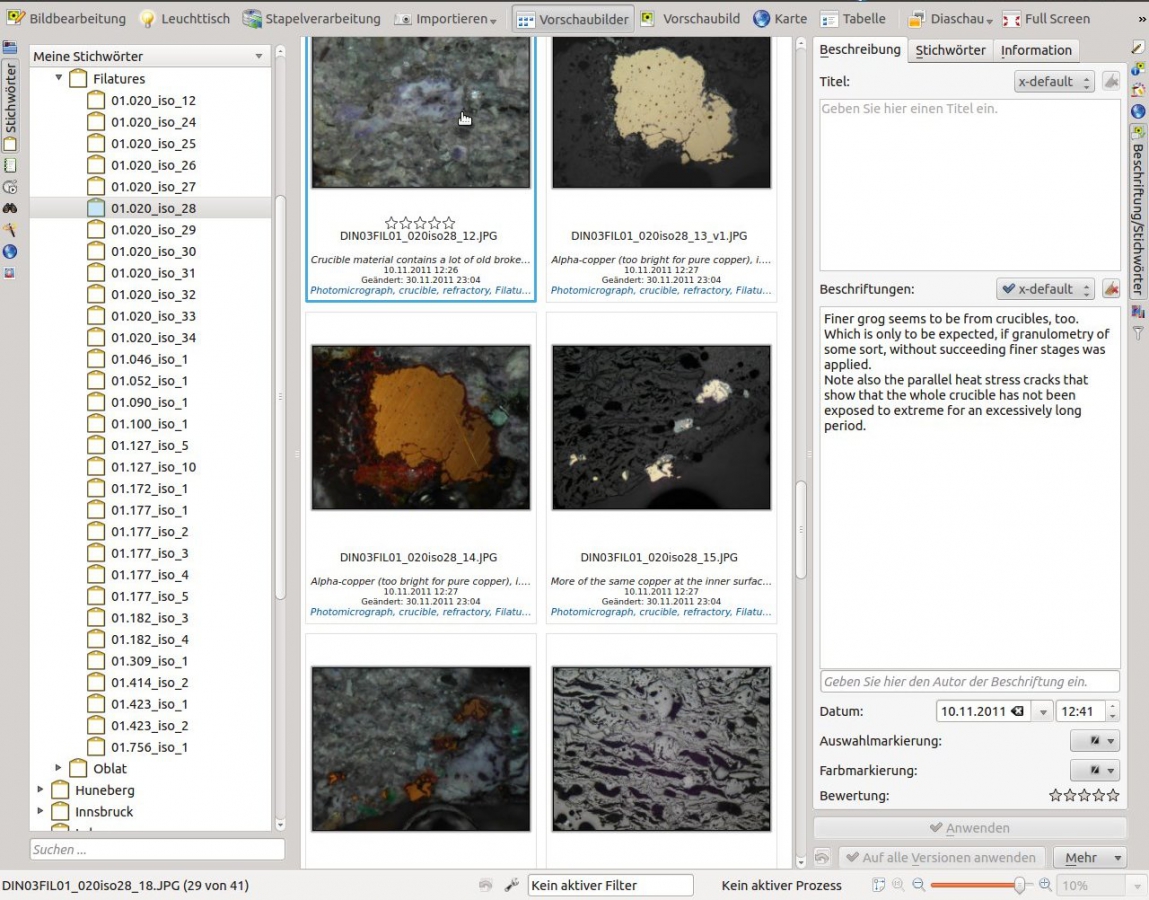Dec
17
2014
Bastian Asmus

 ..for any microscope you might happen to work with. During your microscopy sessions, did you ever wish for less of the dull work, such as noting meta data, contrast method, sample id, photo no or image width? Well – I did.
..for any microscope you might happen to work with. During your microscopy sessions, did you ever wish for less of the dull work, such as noting meta data, contrast method, sample id, photo no or image width? Well – I did.
I did wish for a long time to have a way that my microscope and my camera would speak to each other whenever I change objectives. I am working with Zeiss Universal microscope, mostly with reflected polarising light, i.e. there is no objective revolver. I have to change the objectives individually, which of course, all has to do with the ability to centre the objective for certain steps in polarising microscopy.
To make a long story short: the old days where I have to sit there with a notepad and have to write down all these dull informations are over! From now on my camera, or rather my computer registers any change of my microscope objective and adds this information to my micrographs automatically.
Continue reading
no comments | tags: archaeology, archaeometallurgy, How to, linux, photograhpy | posted in Image Meta information, Lab work, Micrograph, Photography, remote capture, tethered shooting
Oct
22
2013
Bastian Asmus
This article is about managing your micrograph collection without the need of a dedicated data base structure. You can keep your filing structure and will not be dependent on a proprietary management system. The article is centred around embedding meta information within the digital image. Micrograph, microscopical observations and related notes are always kept together. Because of the standardised way meta data is stored in digital image files, it may be easily exported.

Ddigikam enables you to save your microscopical observation notes directly into the meatadata of your micrographs.
Continue reading
no comments | tags: archaeology, How to, linux, microscopy | posted in comparative collection, General, Image Meta information, Micrograph, Microscopy
Sep
19
2013
Bastian Asmus
Do you work with a lot of Exif data or other meta data, such as XMP or IPTC? Storing Exif data in your images is a good way of keeping information about your photos together with your photos or micrographs. You do know the problem: all EXIF data is suddenly lost, the micrograph is now almost useless without it. This is especially true if you use ImageJ to measure features in your micrographs. However if you were working on copies instead of the originals, as you should always do, all is not lost.
The all mighty Exiftool provides a simple solution:
exiftool -tagsFromFile originalimage.jpg anotherimage.jpg
The -tagsFromFile option copies all metadata fom the original file to another image file.
If you are using some sort of linux installation of exiftool is done with your package management system. For OS X there is a dmg package, for WIN there is an executable available on Phil Harveys website.
Don’t get me wrong, ImageJ is a great piece of software and I use it on a daily basis and will continue to do so. I do hope that at some stage in the future this Exif data bug (or is it a feature?) will be fixed and make this current workaround obsolete.
no comments | tags: archaeology, exif, How to, linux | posted in General, Image Meta information
 ..for any microscope you might happen to work with. During your microscopy sessions, did you ever wish for less of the dull work, such as noting meta data, contrast method, sample id, photo no or image width? Well – I did.
..for any microscope you might happen to work with. During your microscopy sessions, did you ever wish for less of the dull work, such as noting meta data, contrast method, sample id, photo no or image width? Well – I did.